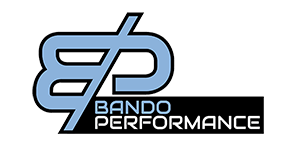The goals of training children from an early age is to improve coordination/movement patterning and to make training FUN! A young athlete who is able to organize their body in the manner that they want and react to something efficiently is going to have an edge over their opponents WITHOUT the need of training for the sake of getting bigger and faster. An athlete who has a positive relationship with training is more likely to continue doing it. This develops consistency, the absolute best way to guarantee improvement.
Adding load to an athlete is an invaluable tool to improving athletic performance, but should only be done when their body is prepared to handle this load. This occurs via physical maturation and improved movement patterning. Of these two things, the controllable factor at an early age is movement patterning. By improving this quality now, we set athlete’s up for success early on in their development.
Training the adolescent athlete is about keeping things VERY simple. An example is seen in an everyday exercise that we do under our roof such as jumping for example. In order to teach an athlete how to jump we must properly teach the mechanisms of landing (absorbing force). We utilize box jumps as a great way to introduce force application as well as teach youth athletes as well as older clientele how to land properly. Box jumps are great because they allow us to absorb little force in the apex of our jump (the highest point being the top of the box). Landing soft and quietly are cues that we can give athletes to perform the specific task at hand in order to best carry out the ability to absorb force once they hit the top of the box. Once an athlete demonstrates that they can confidently perform the exercise; we simply add “load” or in this case; the actual instruction of landing (absorbing force) by adding a small hurdle. By adding a hurdle; gravity is now playing a bigger role in the absorption of eccentric load on the body. It becomes more challenging for the athlete to properly land soft and quiet. This concept of progressing exercises can apply to many different movements (squatting, hinging, pushing, pulling, crawling, etc) as we like to think “Our youth athletes are in the slow cooker. We don’t want to burn them, but rather take our time with movement fundamentals!”
Many parents often ask “What is the best age to start training with my child?” The answer really lies in a couple different things; 1) Is the athlete mentally mature enough to handle the commitment of training 1x, 2x, etc. per week? 2) Are they serious about wanting to better themselves? 3) Are they coachable? 4) Where are they in their physical maturation? 5) Would they be grateful at the opportunity to learn how to better themselves physically?
If you answered Yes to the majority of questions listed above; then it sounds like we would be a great fit for your child! Movement before load is the key!
